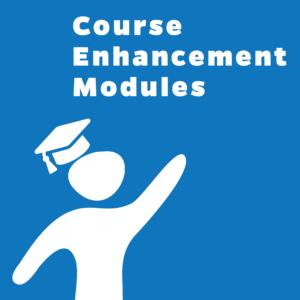Transition Planning and Services
This CEM provides pre-service candidates and in-service teachers with the framework necessary for designing effective transition programs and services to improve graduation and post-school outcomes for students with disabilities.

Purpose
This CEM is designed to build the knowledge and capacity of educators working with pre–service and/or in–service teachers who are teaching diverse students to read. The module can be adapted and is flexible to accommodate faculty and professional development (PD) provider needs. The anchor module and speaker notes can be used in their entirety to cover multiple courses or PD sessions. Alternatively, specific content, activities, and media can be excerpted as needed to enhance existing course and/or PD content.
Rationale
A growing body of evidence indicates that effective transition planning is essential for improved graduation and post-school outcomes for students with disabilities. The importance of transition planning is illustrated by its increasing focus in the several reauthorizations of the Individuals with Disabilities Act (IDEA, 2004; Pub. L. 94-142, §§ A–D). Despite progressively greater legislative emphasis on effective transition planning, however, students with disabilities continue to graduate at significantly lower rates than do their peers without disabilities—64.6% compared to 83.2%, respectively (U.S. Department of Education, 2015). In addition, individuals with disabilities experience significantly higher rates of unemployment and significantly lower rates of employment in comparison to peers without disabilities (U.S. Bureau of Labor Statistics, U.S. Department of Labor, 2014).
To assist pre-service and professional-learning educators in closing the graduation and post-school outcomes gaps, the Transition Planning CEM is organized by the five areas outlined in Taxonomy of Transition Planning: student-focused planning, student development, interagency collaboration, family engagement, and program structure (Kohler, Gothberg, Fowler, & Coyle, 2016).
Objectives
After completing this CEM, users will be able to:
- Describe the components of an effective transition plan.
- Articulate the major elements of effective transition planning.
- Write postsecondary measurable goals for individualized education programs (IEPs).
- Explain the differences between evidence-based practices (EBPs) and predictors of post-school outcomes.
- Identify essential characteristics of effective transition program structures.
- Demonstrate the importance of building self-determination in students with disabilities.
- Present strategies for involving secondary students with disabilities with individualized planning, including the transition IEP.
- Discuss the importance of including families of students with disabilities in the self-determination process.
- Explain the importance of providing transition-related activities within a general education setting.
- Demonstrate how to embed transition-related activities within the general education curriculum and coursework.
- Identify academic EBPs to support students with disabilities.
- Review the law on family engagement in transition planning.
- Learn how family involvement in transition planning predicts positive post-school outcomes.
- Identify EBPs for facilitating family involvement and engagement in transition planning.
- Demonstrate the importance of cross-disciplinary planning (i.e., intra-agency and interagency).
- Understand the critical elements of interagency collaboration.
- Identify actions that schools can take to increase interagency collaboration and expectations for post-school employment and postsecondary education.



